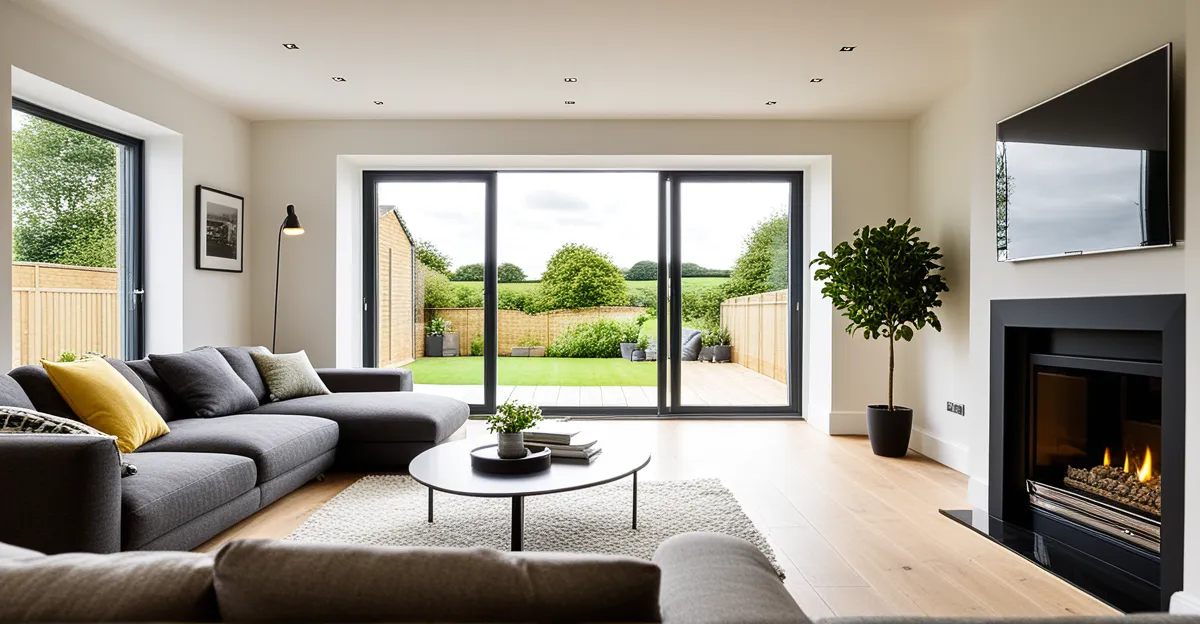Quick ways to boost UK home energy efficiency
Improving home energy efficiency quickly can save both money and the environment. Simple, cost-effective steps like switching to LED bulbs offer immediate benefits. LEDs use up to 80% less energy than traditional bulbs and last much longer, drastically reducing electricity bills and replacement costs.
Another effective measure is draught-proofing windows and doors. Blocking gaps prevents warm air escaping, cutting heating requirements. Draught-proofing kits are affordable, easy to install, and widely available in the UK market, delivering nearly instant energy savings during colder months.
This might interest you : What are the top UK home design tips for small kitchens?
Adjusting your thermostat settings also helps. Lowering the thermostat by just 1°C can reduce heating costs by about 10%. Smart thermostat controls are becoming popular for precise energy management, though even manual adjustments make an impact.
By combining these actions—LED lighting, draught-proofing, and thermostat optimization—homeowners in the UK typically see quick results. Financial savings can add up to £100–£200 annually depending on household size and existing efficiency. These steps act as a strong foundation for deeper energy performance upgrades, while requiring minimal investment and effort.
Also read : How Can Home Furnishings Improve Your Quality of Life?
Insulation strategies for UK homes
Enhance warmth while cutting energy waste.
Effective home insulation UK solutions are pivotal to sustained energy savings. Cavity wall insulation fills the space between brick layers, limiting heat loss by up to 35%. It’s a cost-effective retrofit commonly offered through UK grants, typically costing around £300–£700.
Loft insulation is equally crucial; installing 270mm or more of mineral wool can reduce heat loss through the roof by 25%. Given that heat rises, enhancing loft insulation can quickly lower heating needs. Some UK homeowners qualify for government schemes that cover installation costs, boosting accessibility.
Underfloor insulation further enhances efficiency, especially in older homes with suspended floors. Though installation is pricier, it prevents cold drafts and lifts overall comfort.
Draught-proofing complements these by sealing gaps around windows, doors, and floors. Effective draught-proofing materials include brush strips, sealant tape, and foam gaskets. These reduce unwelcome cold air infiltration and can typically be fitted by homeowners with basic DIY skills.
Together, these insulation strategies not only reduce energy bills but also improve home comfort, deserving priority for anyone seeking quick results in home energy efficiency.
Upgrading heating systems efficiently
Effective heating upgrades for lasting savings.
Replacing an old inefficient boiler with a modern energy-efficient model can reduce heating bills by 20–30%. New boilers often feature modulating burners and improved heat exchangers, optimizing fuel use while maintaining comfort. Regular servicing also preserves boiler efficiency and prevents costly breakdowns.
Smart thermostats are a practical upgrade within the UK heating systems landscape. These devices learn your habits and adjust heating schedules accordingly, avoiding wasted energy during empty periods. Installing a smart thermostat can cut heating costs by around 10%, contributing to quick results on your energy bills.
Heat pumps represent a sustainable alternative, extracting heat from air or ground sources. While installation costs are higher, they deliver substantial savings and lower carbon emissions. Eligible homeowners may access UK government incentives to offset initial expenses, making heat pumps increasingly accessible.
Balancing these upgrades—boiler replacement, smart controls, and sustainable heating—enables significant improvements in home energy efficiency. The blend of technologies matches different budgets and ambitions, making the UK heating systems market dynamic and increasingly green.
Reducing energy use with efficient appliances and lighting
Smart choices for lower bills and greener living.
Choosing energy-efficient appliances UK makes a big difference in home energy efficiency. Modern appliances often carry an energy rating label; aim for A++ or higher to ensure minimal electricity use. For example, an A+++ fridge uses around 40% less energy than a standard model. Prioritise features like eco-modes and inverter technology, which optimise performance and reduce consumption.
Lighting efficiency is another quick win. Swapping older bulbs for LED bulbs cuts energy use dramatically. LEDs consume about 75-80% less electricity than incandescent bulbs and last up to 25 times longer. They emit less heat, meaning less cooling is needed in warmer months, adding to energy savings.
Beyond equipment, small behavioural changes matter. Switching off appliances fully rather than leaving them on standby, unplugging chargers, and using timers can reduce wasted energy. Even minor adjustments add up over time, delivering tangible reductions in energy bills and environmental impact.
Combining energy-efficient appliances UK with lighting efficiency and mindful usage results in quick and sustained improvements. Homeowners often see noticeable savings within months, reinforcing these simple yet powerful energy-saving tips UK as essential for any efficiency plan.




